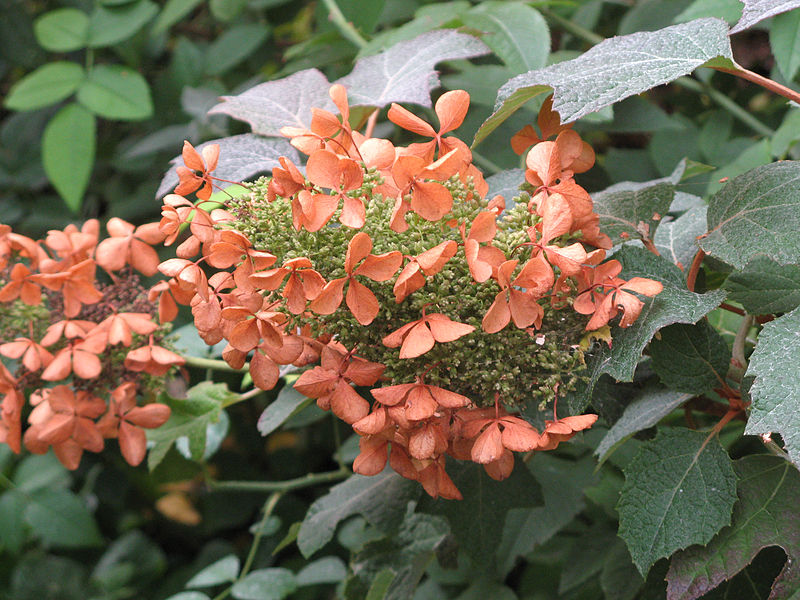By Sandra Nelson
This week’s pick is by Sandy Defoe, Artistic Director.
Oak Leaf Hydrangea
“In summer, the attractive green leaves show off other plants. The flowers last all summer long and then the dried flower heads stay on through the winter.”
Long a favorite for Midwest gardens (introduced in 1803!) , Oak Leaf Hydrangea tops the list of Sandy’s “Must Haves.‘ Not only is this shrub easy to grow, it thrives in full sun (6+ hours daily) to partial shade (4 – 6 hours daily) conditions. Oak leaf hydrangea does best in organically rich, moist soil and appreciates a layer of mulch during the hot summer months to both cool the soil and hold in moisture. Depending on the variety, plants can reach a height of anywhere from 3 – to 8 feet, but their growth rate can be relatively slow for a deciduous shrub — between 12 and 24 inches per year, Mature plants have an upright yet rounded shape.
Fragrant blooms begin their show in late spring or early summer. As the summer progresses, the 12 to 14 inch clusters of white blooms gradually turn pinkish purple and then finally brown. The dried flower heads provide striking winter interest. They also are excellent in dried arrangements.
The dark green summer foliage of most oak leaf hydrangea varieties (Little Honey is a variety with yellow leaves.) provides an impressive backdrop for colorful summer displays, while their reddish-purple fall color adds a splash of excitement to the landscape. Peeling bark in the winter brings an intriguing dimension to the landscape.
Oak leaf hydrangea rarely has serious insect or disease problems and typically needs little day-to-day maintenance. Winter damage should be addressed as soon as leaves begin to appear in the spring. Since oak leaf hydrangeas bloom on old wood, any pruning needs to be done as soon as blooming ends. Bees, butterflies and other beneficial pollinators are attracted to the fragrant blooms.
Zones: 5 – 9





